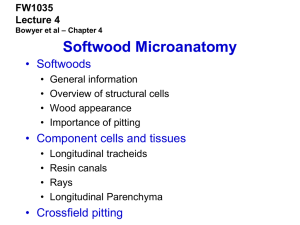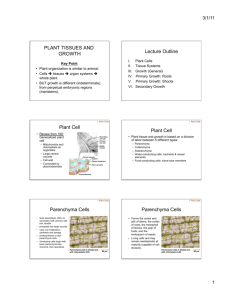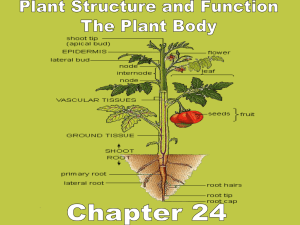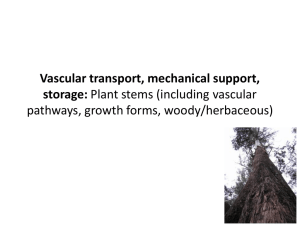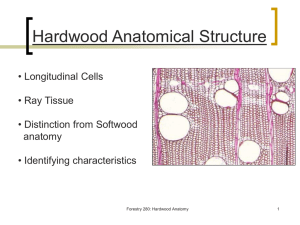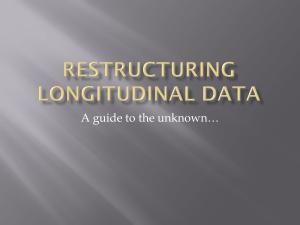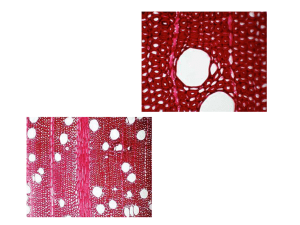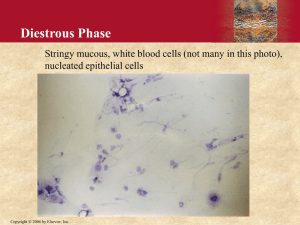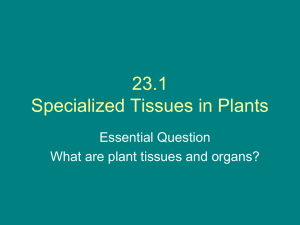Lecture #5 - Anatomical Structure of Softwoods, part I
advertisement
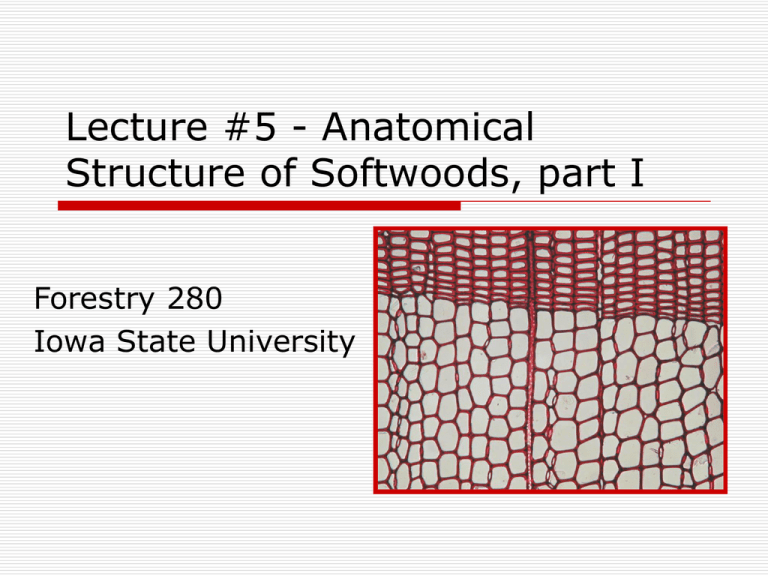
Lecture #5 - Anatomical Structure of Softwoods, part I Forestry 280 Iowa State University Cross-Section of Eastern White Pine Cell Types of Coniferous Woods Longitudinal Cells Tracheids – Tracheids conduct water/solutes and provide mechanical support. Two Types: Longitudinal Tracheids Strand Tracheids Radial Section (RS) XS Longitudinal Tracheids (LTs) Elongated cells with thickened walls and tapering, pointed ends Closed at the ends, i.e., are “imperforate” as opposed to the vessel elements found in hardwoods. Side walls of tracheids contain pits. Longitudinal Tracheids, continued Mature-wood softwood tracheids are typically between 3-5 mm long and have a l/d ratio of about 100; thus, the average diameter of such cells would be 30-50 micrometers in (tangential) diameter. The radial diameter of LTs decreases from earlywood to latewood. LTs typically comprise 90 to 94% of softwood volume. Strand Tracheids (STs) Strand tracheids are short cells that are arranged in longitudinal strings or “strands” STs have one or two “square ends” They contain bordered pits. They are usually found near a resin canal. Parenchyma Parenchyma conduct and store food and other substances. Longitudinal Parenchyma Epithelial Cells Longitudinal Parenchyma Relatively thin-walled cells Have simple pits Form strands with tapered ends May contain darkly staining substances When present, longitudinal parenchyma are not abundant. Epithelial Cells Epithelial cells form the periphery of a structure called a resin canal (RC) May be thin- or thickwalled Collectively, they are called “epithelium” They excrete resin into the RC Epithelial Cells, continued “Normal” resin canals are found in four domestic genera, namely Pinus (pines), Picea (spruces), Larix (larches), and Pseudotsuga (Douglas fir) “Traumatic” resin canals (i.e., those arising in response to an injury to the tree) may be found in these and other coniferous genera. Longitudinal only. Transverse Cells Ray Tracheids Ray Parenchyma Epithelial cells Transverse Section of Sugar Pine Ray Tracheids Have bordered pits Relatively thickwalled cells Interior walls are either smooth or dentate Not universally present (i.e., not found in all genera). Ray Parenchyma Universally present in all genera Have simple pits Generally thinwalled, but some may have relatively thick, lignified walls End-walls may be smooth, nodular or indentured Epithelial Cells These surround transverse resin canals May be thin- or thick-walled Are part of a composite structure known as a “fusiform ray”
